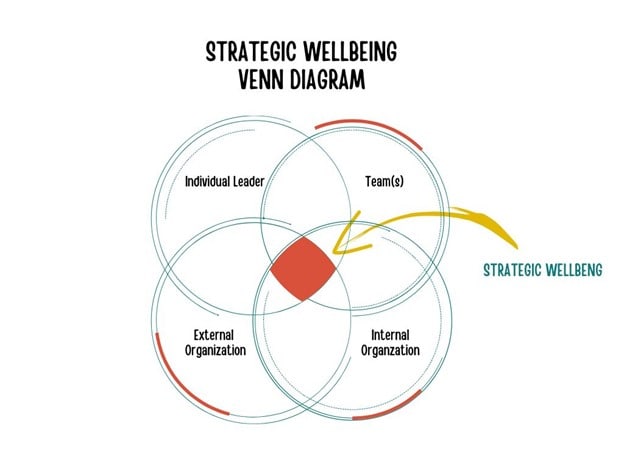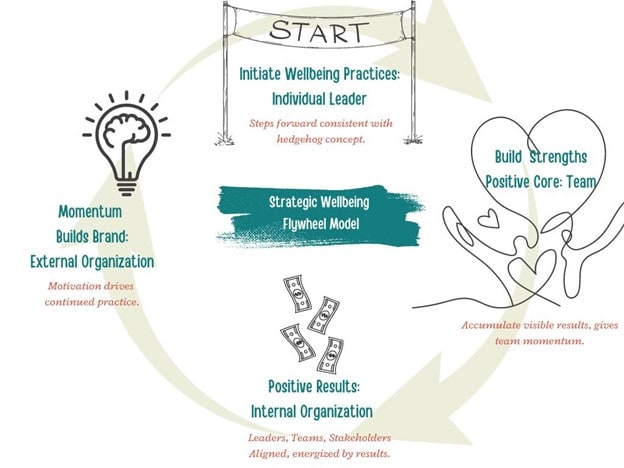The relationship between well-being and performance in the workplace has emerged as a critical factor in driving organizational success. A groundbreaking study by Dr. Jan-Emmanuel De Neve and his team from the University of Oxford and Harvard reveals a compelling association between employee well-being and profitability. As a result, workplace well-being has become a focal point in the global competition for talent and a key ingredient for business prosperity.
“We’re hearing directly from the employees themselves. It’s not an HR officer telling us how they think employees feel. We’re getting to the heart of the matter. While leaders might intuitively know that how people feel is important, it’s hard to push this agenda if you can’t show the return on investment. They haven’t jumped to prioritize it in part because there hasn’t been enough hard data. But now there is.”
Professor Jan-Emmanuel De Neve, Director of the Well-Being Research Centre at the University of Oxford
Dr. De Neve and his team used company-level employee well-being measures to predict firm performance. They found that well-being is associated with firm profitability, with data being aggregated into a Workplace Well-being Score. Companies with the highest levels of well-being outperformed standard benchmarks in the stock market.
Despite the compelling evidence that links well-being to organizational success, many leaders still perceive it as secondary to other priorities. Only 18% of leaders prioritize well-being strategically within their organizations, often due to misconceptions about its significance. However, 89% of leaders say well-being provides a competitive advantage.
With research like this, it’s essential for organizations and leaders to understand what well-being actually is to prioritize it effectively within their organizations.
Defining Well-Being
While often equated with general health and happiness (wellness), well-being encompasses a broader scope, including physical health, mental health, purpose, satisfaction, and resilience. At the organizational level, well-being extends beyond the health and happiness of an individual to the collective state of all individuals within the organization, influenced by the work environment and culture.
Elements of Culture
Work environments are established by culture. In organizational psychology, culture has three key elements: practices, values, and underlying assumptions.
- Practices are daily routines that reflect and reinforce values.
- Values are shared principles about what is important.
- Assumptions are deeply held beliefs about how the world works, which shapes our values and drives our practices.
Work environments either promote or detract from an individual’s well-being, affecting the day-to-day experiences and growth of each individual, regardless of title or position.
Given that work constitutes more than one-third of waking life for most adults (and in nonprofits our passion can often cause us to overcommit to a mission), leaders have a responsibility to ensure the environment they create positively impacts the growth of individuals and teams.
Prioritizing well-being is essential to accomplish this. Well-being is a multidimensional concept that reflects optimal functioning and satisfaction in various domains of life. Recognizing this interplay in ourselves and those we lead ensures we create and maintain environments that support well-being. By re-grounding our work environments in well-being practices, we breed sustainable growth and empowerment that will support us as we continue to face rapid changes and challenges, across industries and sectors.
The Case for Prioritizing Strategic Well-being
Working longer, faster and harder is no longer the answer to enhance productivity or improve overall performance. Organizations are hitting a proverbial wall with this approach, as it too often results in many working slower, shorter and with much less satisfaction.
In fact, McKinsey & Company released a recent report showing that attracting and retaining public sector employees must be done in a manner that keeps pace with current workplace trends and demographics. This includes developing a strong employee value proposition and planning strategically for future needs. Research from the Great Attrition supports the fact that many employees are more interested in being part of a supportive community than the number on their paycheck.
Taking a strategic approach to integrating well-being into an organization requires leaders to go beyond individual health or short-term goals to aligning it with the organization’s long-term objectives. By incorporating well-being into strategic planning, leaders can build the psychological capital of their teams — hope, efficacy, resilience, and optimism — essential in today’s fast-paced world of work. Strategic well-being initiatives must be rooted in authentic leadership commitment and integrated into organizational goals, systems and processes.
“Today, there is a growing recognition that the pace of change is so great we cannot possibly solve all the problems at the rate we need to … working to solve root problems alone is not enough and will never work because the pace of change is too fast. What is needed now is to build capacity, connect people and provide a platform for sharing knowledge and advancing common agendas.”
Judith Rodin, Former President, The Rockefeller Foundation
How to Create Strategic Well-Being Initiatives
Strategic well-being initiatives encompass a range of practices and interventions designed to enhance the overall health and performance of individuals, teams, and organizations.
In my research, I define strategic well-being as a holistic approach to individual and organizational well-being that aligns well-being initiatives with long-term goals and objectives of the organization.
The aim is to help leaders be disciplined in their approach to its implementation. After all, successful strategic well-being initiatives hinge upon the success of the individual implementing them (that’s you!).
The Foundational Building Blocks of Strategic Well-Being
- Leadership Commitment: Authentic leadership commitment is essential for driving well-being initiatives forward. Leaders must embody the values of well-being and prioritize their integration into the overarching organizational strategy.
- Mindful Approaches: Mindfulness practices, such as meditation and deep breathing exercises, can help individuals manage stress, increase resilience and enhance overall well-being. By promoting mindfulness in the workplace, leaders create a culture of present-moment awareness and emotional intelligence.
- Alignment with Organizational Goals: Well-being initiatives should align with your organization’s long-term goals and objectives. By linking well-being to key performance indicators and strategic priorities, leaders demonstrate the importance of employee health and happiness in achieving success.
- Integration Into Systems and Processes: Well-being should be integrated into existing systems and processes, such as performance management, talent development and organizational culture. By embedding well-being into everyday practices, leaders create sustainable habits that support individual and organizational growth.
- Measurement and Evaluation: It’s essential to measure and evaluate the effectiveness of well-being initiatives over time. Leaders can use metrics, such as employee engagement, retention rates, productivity levels, and absenteeism, to assess the impact of well-being on organizational performance.
Four Critical Filters for a Proposed Well-Being Practice
In addition to the foundational building blocks of strategic well-being, four criteria must be satisfied for a proposed well-being practice to be considered strategic, ensuring its sustainability. These filters are related to key organizational stakeholder groups.
- The individual [Self-awareness, purpose and meaning]
- The team [The power of the individual in context]
- The internal organization [Individuals and teams co-create impact measures that justify the investment.]
- The external organization [To be sustainable, practices must positively advance the organization’s mission and include measurable shifts in performance indicators externally and unique to the organization, as well as positively impact organizational beneficiaries.]

Getting Started at Your Organization
The journey toward strategic well-being requires commitment, courage and a mindset shift — from scarcity to abundance. It also requires us to align with Jim Collin’s Flywheel Effect, a concept developed in his book “Good to Great” wherein he notes that good to great transformations never happen in “one fell swoop, rather, the process resembles relentlessly pushing a giant, heavy flywheel, turn upon turn, building momentum until a point of breakthrough, and beyond.” As individuals take action to prioritize their well-being, the team begins to benefit and build on individual practices at the team level, which then translates into impact measures felt within the internal organization [like reduced turnover] and this yields results that benefit the external organization, rippling into customer retention rates, repeat business, and overall positive brand image. With careful implementation and ongoing evaluation, strategic well-being initiatives can become a cornerstone of organizational success in the 21st century.

As organizations navigate the complexities of the modern workplace, prioritizing well-being emerges as a strategic imperative. By embracing strategic well-being practices, leaders can foster environments that support growth, build psychological capital, and ensure long-term success.
Master Mindful Leadership & Well-Being at Your Nonprofit
If you are a nonprofit leader curious about embracing well-being as an integral part of your organization’s strategy, take the first step by attending for our two-part series that starts May 2: Master the Secret Ingredient to Reaching Your Full Potential: Mindful Leadership.


